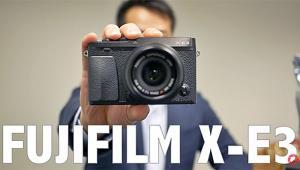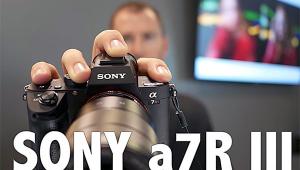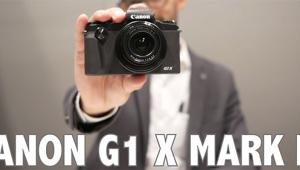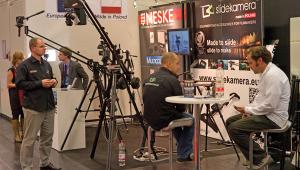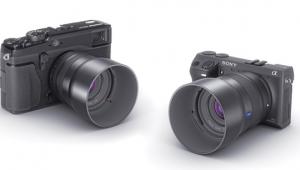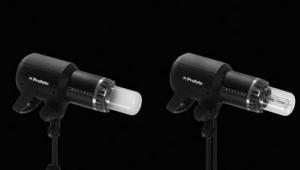Trends In Mobility And Economy
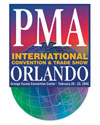 Surprisingly,
one or two companies I'd seen at PMA the previous year were noticeably
absent this time around, but in their stead were several distributors and manufacturers
displaying new studio products. Mobility stood at the forefront in some booths,
economical studio flash alternatives in the form of the ever popular but more
modestly priced (e.g., amateur friendly) self-contained monolight (monobloc)
in these and others. In some instances, the emphasis was placed on providing
these lights in kit form, which makes them even more appealing to the budget
minded and starter studio.
Surprisingly,
one or two companies I'd seen at PMA the previous year were noticeably
absent this time around, but in their stead were several distributors and manufacturers
displaying new studio products. Mobility stood at the forefront in some booths,
economical studio flash alternatives in the form of the ever popular but more
modestly priced (e.g., amateur friendly) self-contained monolight (monobloc)
in these and others. In some instances, the emphasis was placed on providing
these lights in kit form, which makes them even more appealing to the budget
minded and starter studio.
The systems shown were not dramatic departures from what we'd seen earlier
from the competition or necessarily from the companies showing these products,
but they did not fail to grab my attention nonetheless, often because of their
styling or some novel feature. In a number of cases, strong emphasis was placed
on lights being digital camera friendly, which immediately sparked my interest.
(Note: While a 6v triggering voltage may be a theoretical safe limit, check
with the camera manufacturer or your photo dealer before using any studio/mobile
strobe system with your digital camera.) And admittedly, anytime someone shoves
a digital display in front of my face, I'm always enamored of it and want
to play with whatever it's attached to.
 |
 |
Almost hidden away toward the back, amid booths showing off odds and ends, was Innovatronix. This company was new to me, but the product appeared interesting enough for me to lead off with it. The Tronix Explorer 1200 Pure Sine Wave Inverter is a fancy name for a portable battery pack capable of driving up to two studio monolights or power packs totaling 1200 ws in output. Its affordable $230 price tag adds to the allure. Featuring short circuit and overload protection, this battery can drive a 300 ws strobe for 1000 full-power flashes, with recycle times as low as 2 seconds (recycling increases with higher output). The unit comes with a carry handle and has audio and LED battery level indicators--recharging in as little as three hours. It is currently available only online, directly from the manufacturer.

As we move to the Bogen Imaging Inc. booth, and so it doesn't get lost
amid the clutter of studio strobes to follow, we'll begin with the new
Gossen Digipro F ($255, street), a new twist on flash meters. As expected, this
handy meter boasts a precision digital/analog LCD read-out, and reads both flash
and ambient light by reflected and incident light--but here's where
it takes a turn from the norm: In place of a swivel head, this meter features
a tilting head, which, Bogen explained, adds to the meter's long-term
durability. (The advantage to a moving head is that it allows the display to
face you while the incident dome is pointed at the light, making meter readings
faster and more efficient.)
We next move on to news from Elinchrom, beginning with monolights, with a focus
on mobility: the Style 400BX is a 400 ws portable compact monolight boasting
a five-stop range and weighing only 4.3 lbs. These lights incorporate the latest
innovations in cutting-edge multi-voltage technology with all the accessories
necessary to plug-in anywhere, with a rapid recycle time of 1 second. Available
in two kits, each kit contains two Style 400BX heads, carrying case, and accessories
varying with kit configuration, with prices starting at $1140 (street).

New Elinchrom multi-voltage Ranger RX ($2050) and RX Speed AS ($2270) battery
packs were also introduced, weighing as little as 13 lbs. The upgraded Ranger
RX (with symmetric output) and newly designed asymmetric Ranger RX Speed AS
both deliver up to 1100 ws. The RX now recycles to full in 5.5 seconds, delivering
140 flashes, whereas the RX Speed AS brings recycling down to 2.9 seconds, for
250 flashes. Full battery recharging is achieved in about three hours, with
enough juice to drive a modeling lamp for short periods.
Booth Photographic debuted the Aurora Fusion plus (Fusion F-300, $1150; Fusion
F-1200, $2135). These dual-voltage 300 and 1200 ws monolights come with a wireless
remote control and feature a digital LCD read-out. They each sport a 1000w halogen
modeling lamp, strong enough to be used for continuous-light setups and video,
with proportional and independent output. Remote triggering via cable, optical,
and infrared sync. Triggering voltage of 12v may be high for many popular digital
SLRs.
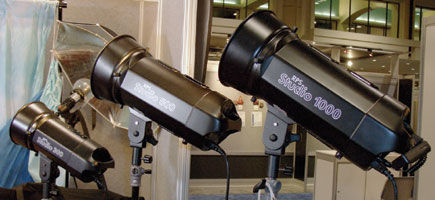
Dot Line Corp. displayed the RPS Studio monolight line-up, consisting of an
economically priced 300 ws ($261), 500 ws ($450), and 1000 ws ($533) monolight,
available individually or in kits. Sporting a handsome matte black finish, each
light features continuously adjustable output over a five-stop range (four stops
on the smallest unit), infrared triggering, and proportional modeling light
(250w quartz on larger monolights). The kits feature a deluxe roller case to
hold all items, including stands.
- Log in or register to post comments
